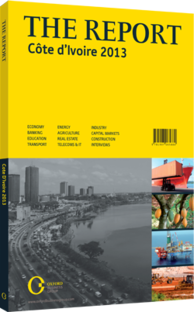Regional leader: Expansion of domestic electricity production set to benefit the WAPP
In a region home to 250m people and which is expected to reach 360m by 2020 as per World Bank figures, the provision and expansion of the power supply is a key challenge. Set up in 2006, with the initial aim of creating a regional electricity market, the West African Power Pool (WAPP) is now pushing ahead with a sub-programme that seeks to integrate the power sectors of Côte d’Ivoire, Liberia, Sierra Leone and Guinea (CLSG) by increasing electricity production and building more transmission networks. The project is aimed at developing several power generation projects – the Bumbuna hydropower plant in Sierra Leone, hydropower plants in Guinea, in addition to greater output from gas-fired power assets in Côte d’Ivoire – to increase the supply of low-cost electricity for export. The project also foresees the construction of a 1110-km high-voltage line, 10 high-voltage stations – of which four will be in Liberia, five in Sierra Leone and one in Guinea – and the expansion of two high-voltage stations in Côte d’Ivoire and Guinea, respectively.
FINANCING: In May 2012, the World Bank, African Development Bank, European Investment Bank (EIB) and the German group KfW provided €112m in zero-interest financing and a €24m grant for the CLSG transmission-coordinator project to build 1349 km of power lines. The project aims to lower electricity costs in the region, which are some of the highest in the world. Given its superior infrastructure and power-generation capacity, Côte d’Ivoire has the lowest electricity production costs per KW in the region, giving it a comparative advantage in exporting electricity to its neighbours, Luc Ayé, general manager at Azito Energie, told OBG.
Funds will go also toward financing feasibility studies for large hydropower projects in the region designed to generate electricity bound for the CLSG transmission network. At present, the project is separated into two zones: Zone A covering the eastern areas of ECOWAS and Zone B encompassing the western part.
Also within the WAPP framework, Côte d’Ivoire and Mali signed a €104m electricity export and infrastructure contract in December 2012 that will see the construction of a 225-KW high-voltage power line linking the areas of Ferkessedougou and Laboa. According to the deal terms, Côte d’Ivoire will provide 30 MW at peak hours of demand and 100 MW in off-peak periods. With the provision of low-cost power from Côte d’Ivoire, Mali will be able to reduce electricity prices from CFA86 (€0.13) to CFA45 (€0.07) per KW.
The Ivoirian government also expects to double the capacity of the 330-KW transmission line between Côte d’Ivoire and Ghana in 2013. Projects in the pipeline include the 330-KW Riviera (Côte d’Ivoire) and Prestea (Ghana) transmission lines that are subject to a pre-feasibility study and to be funded by the EIB. The project will also see the installation of two transformers of 330 and 225 KW at the Riviera substation.
LOW COST EFFICIENCY: Regional demand for low-cost electricity from Côte d’Ivoire will increase in line with the development and expansion of transmission links to the WAPP network. With exports already reaching 17% of total production, the government aims to become a key electricity centre within the region.
In order to boost revenues from power exports, the Ivoirian government plans to invest in all segments of the power supply chain with the goal of increasing low-cost power capacity to 2421 MW by 2018. On the generation side, the authorities are investing in upstream exploration to provide self-sufficiency in natural gas supplies, the country’s major energy source. Côte d’Ivoire seeks to diversify its energy sources with hydropower and renewable energy contributing an additional 15% and 5% to total capacity by 2020. The government has also targeted the underfunded transmission and distribution networks for investment, given that every year the country loses 30% of its total production before it reaches end-users due to poorly maintained and outdated distribution and transmission networks. With this in mind, the authorities are injecting some CFA400bn (€600m) to construct approximately 1200 km of new power lines as well as repairing voltage transformers.
You have reached the limit of premium articles you can view for free.
Choose from the options below to purchase print or digital editions of our Reports. You can also purchase a website subscription giving you unlimited access to all of our Reports online for 12 months.
If you have already purchased this Report or have a website subscription, please login to continue.

